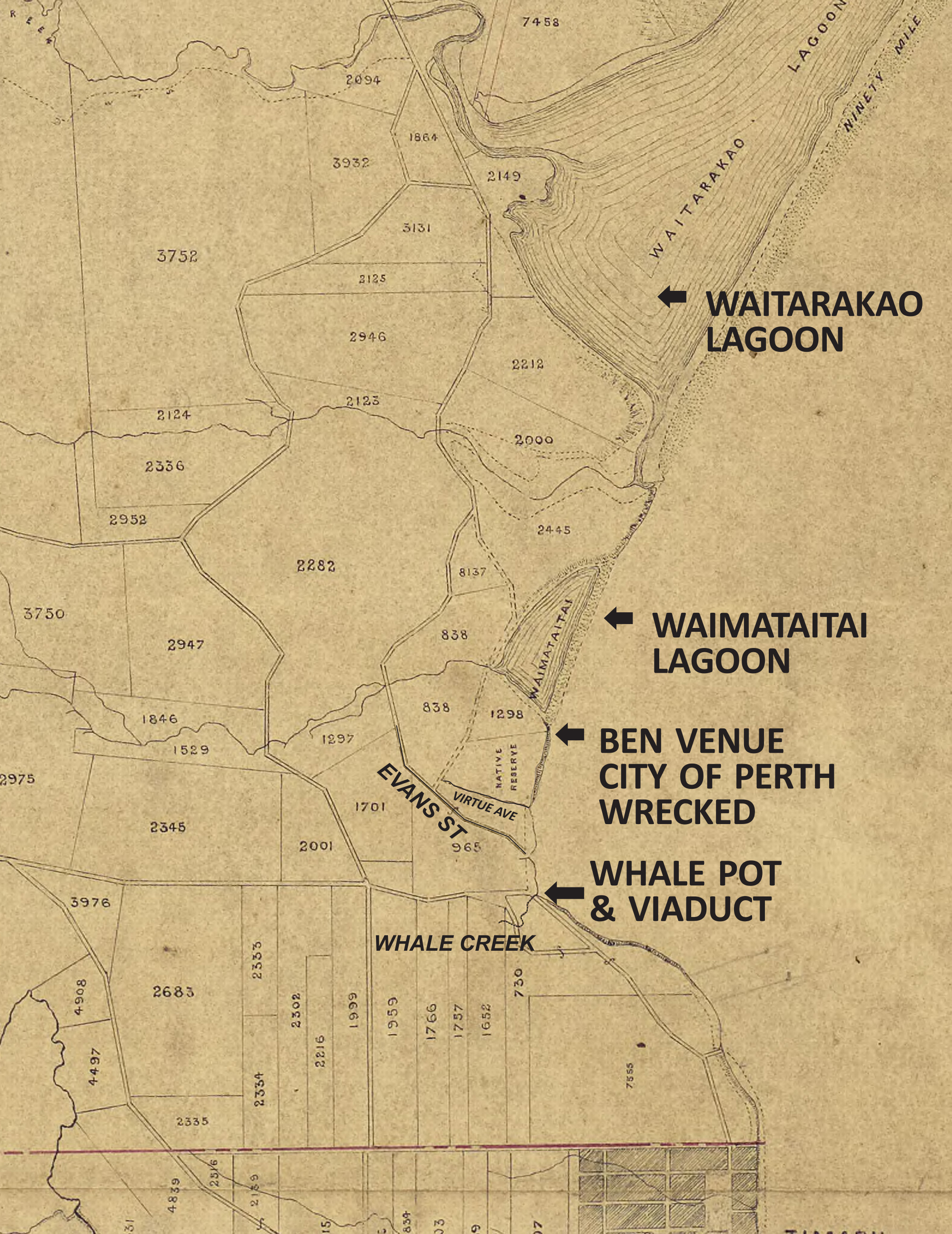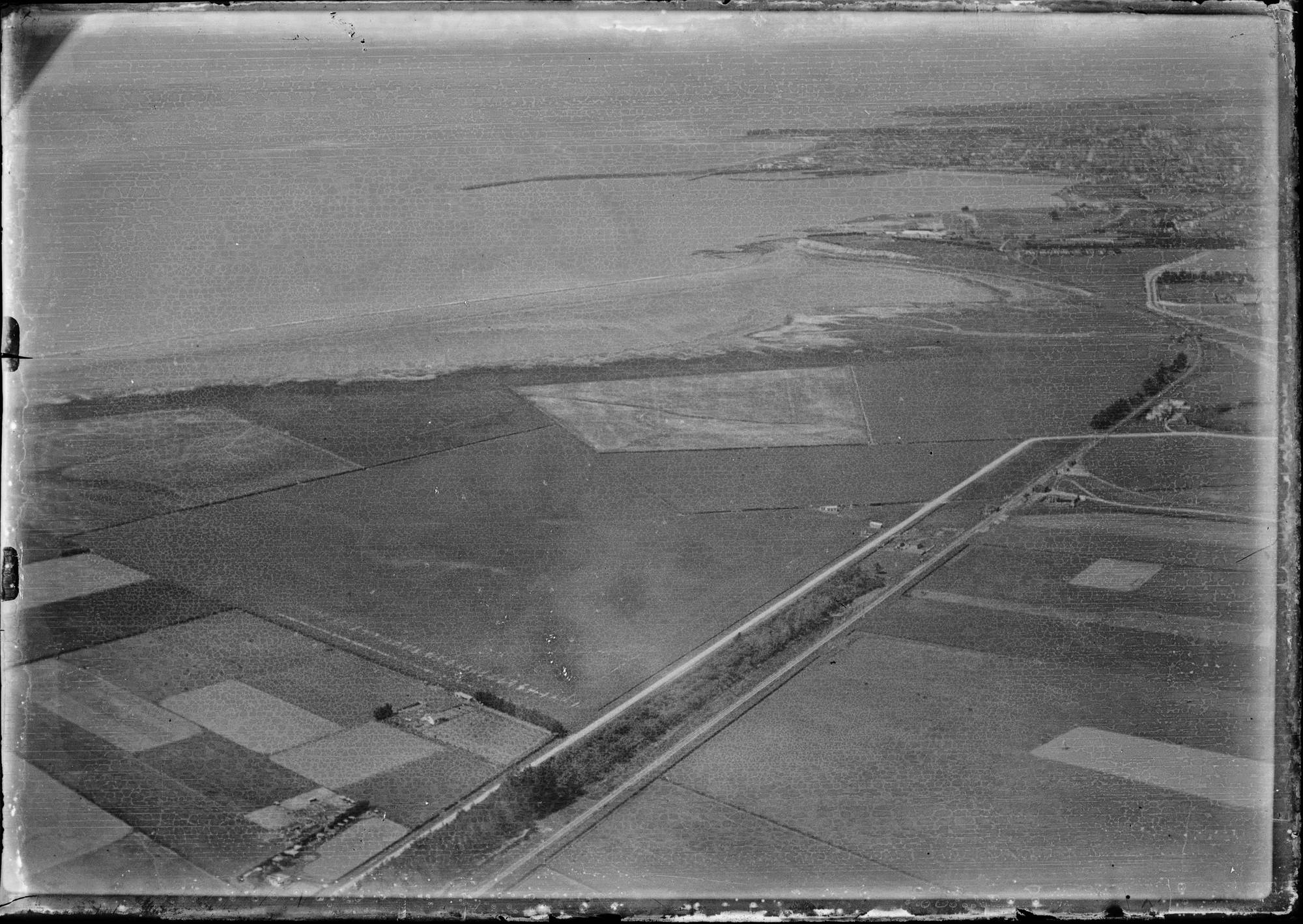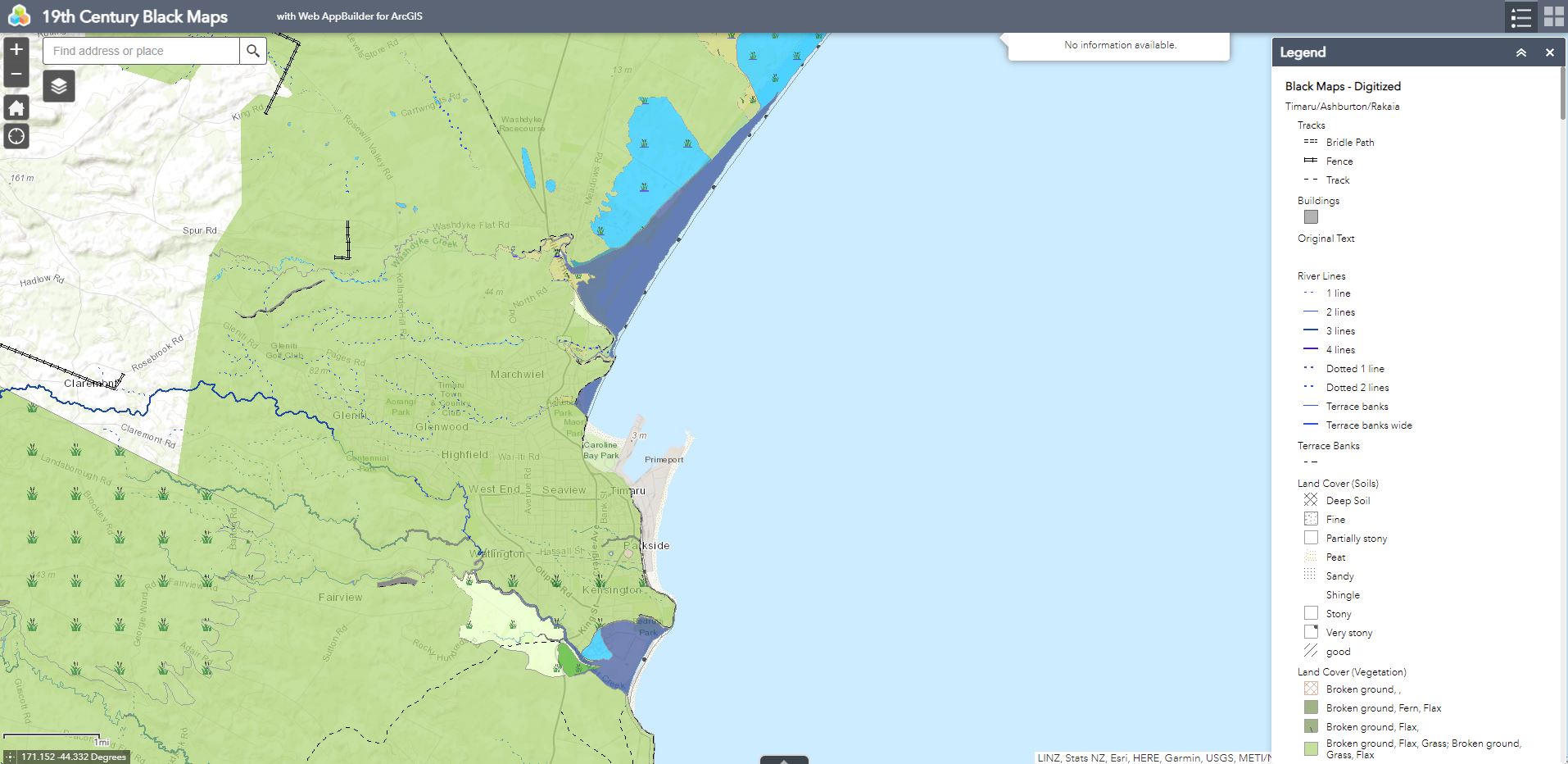
The view of the Caroline Bay coastline in 1874. This is a section of a watercolour painting by Sir Eliot Whately (1841-1927). Depicts Caroline Bay, Timaru in October 1874. nla.gov.au/nla.obj-138581877
While tides and currents gradually change and shape our coastlines, the intervention of man-made structures also plays a significant role in accelerating coastal evolution and erosion.
The construction of the port and breakwater interrupted the northward flow of sediment along the Timaru coastline. Gravel was trapped south of the port and sand was pushed into Caroline Bay, causing the land in these areas to grow out towards the sea. To the north, beaches from Waitarakao to the Opihi River were conversely starved of sediment, resulting in an increase in erosion at the cost of land, coastal lagoon area and biodiversity.
Timaru Port provided a huge boost to the economy and resulted in the formation of Timaru’s iconic Caroline Bay beach by re-directing the flow of sand into what was previously an open bay with coarse gravel beach.
However, as Blackett predicted, the port development interrupted the flow of gravel along the coast resulting in a rapid increase in erosion to the north of Timaru. The increased erosion has had many negative impacts on the land and the environment, particularly affecting biodiversity and the once plentiful mahinga kai areas used by Māori.

J. S. Browning, (1831 – 1909), Timaru Looking North West, 1860, file copy print, Hocken Collections, Uare Taoka o Hākena, University of Otago.

Sketch of Caroline Bay, Timaru By E. Norman - Copied from original held in South Canterbury Historical Museum, Timaru, 1870

Next time you are at Dashing Rocks compare this painting with the view today. Note the changes to the coastline. This is a section of a watercolour painting by Sir Eliot Whately (1841-1927). Depicts Dashing Rocks bay looking out to Waitarakao Washdyke Lagoon, Timaru in October 1874, commencement of ninety miles beach. Courtesy National Library of Australia nla.gov.au/nla.obj-138582273

90 Mile Beach, Timaru, New Zealand, by Burton Brothers. Te Papa (C.014424)

Timaru Harbour, Province of Canterbury : general chart of Timaru and adjoining coast by Sir John Coode showing works recommended by Sir John Coode, August 1875. (from Patiti Point to Washdyke Lagoon). The proposed works are shown by red colour. timdc.pastperfectonline.com/DCEC5B88-61FE-4949-80EC-525377755260

In this map you can see the Caroline Bay in 1911. Miscellaneous Plans - Borough of Timaru, South Canterbury, 1911 - T.N. Brodrick, Chief Surveyor Canterbury ndhadeliver.natlib.govt.nz/IE31423732



In 1929, the 400m long Memorial Wall was built with Bronze plaques feature the battlefield names where kiwis served in international wars. This was also the sea wall at the time.

In 2008 the sandy bay was more than 400 m northeast of the memorial wall and the sand will continue to build out until it finds an equilibrium.
In comparison the coast further north is starved of sediment, where for example Waitarakao Washdyke Lagoon in 1881 was 253 hectares, but now is about 20. This was one of 15 fishing easements set aside in 1868 by the Native Land Court in to allow Ngāi Tahu to continue the practice of mahinga kai. For the longest time it had the perfect mix of saltwater and freshwater, allowing a diverse range of native species to thrive there. Now a combination of the port, industrial area, SH1 and railway prevent the lagoon from expanding, while the sea pushes the gravel barrier ever inland.

Aerial view of Timaru, showing Caroline Bay, harbour and town by Frank Douglas Mill - 1927-1937 - Auckland Libraries Heritage Collections FDM-0690-G

View from above, the Waimātaitai lagoon has drained and been reclaimed as Ashbury Park with an athletics track. Sand is accumulating in Caroline Bay and tennis courts, grass prominade and caretakers house are established.

ABOVE Arial view looking down to Caroline Bay and the Port of Timaru 2019 mapviewer.canterburymaps.govt.nz

LEFT The brown lines show the changes to the mean sea level since 1926. Graphic courtesy Roselyn Fauth 2019 with assistance from the South Canterbury Museum. RIGHT One of the mean tide markers along the North to South promenade at Caroline Bay. Photograph courtesy Roselyn Fauth 2019

Aerial view of Timaru coastline with harbour in background, approaching from the north. 1927-1937. - Auckland Libraries Heritage Collections FDM-0099-G
Credit is to Auckland Libraries Heritage Collections FDM-0690-G, F. Douglas Mill Collection.











